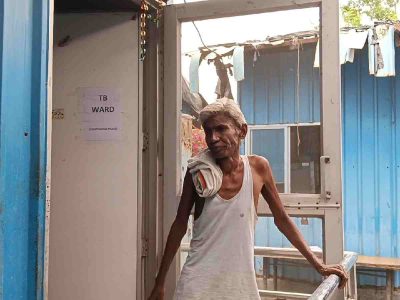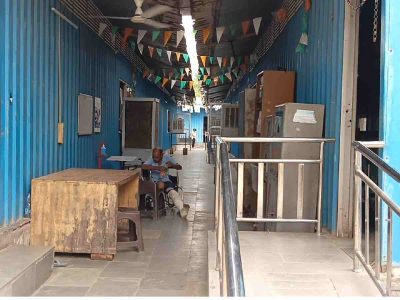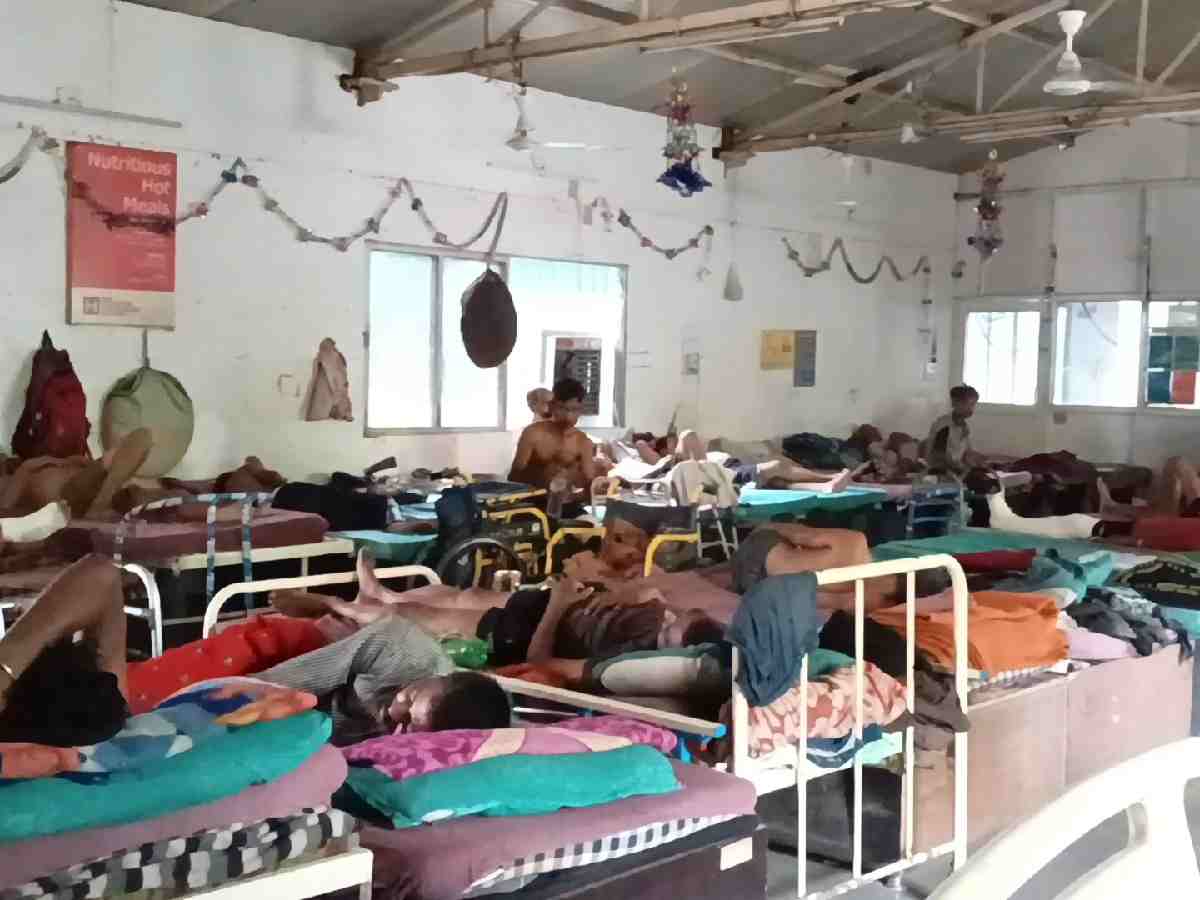Delhi: On the banks of the Yamuna river towards the end of Monastery Market lies an inconspicuous site which houses one of the only three functional night shelters which double as a recovery centre in Delhi. The night shelter situated at Geeta Ghat houses around 250 people who are recovering from some disease or the other.
However, with the Delhi Development Authority’s (DDA) plan to beautify the banks of the river underway, the night shelter faces the threat of demolition, leaving the residents worried.
The DDA has surmised that the land along the river’s banks is owned by it and it is essential to have the shelter removed.
Presently, in the national capital, apart from the Geeta Ghat night shelter, there are two more recovery centres — one at Kalkaji and the other at Sarai Kale Khan. Out of the two, only the former functions as a full-fledged recovery shelter. However, the Kalkaji recovery shelter does not have separate wards for patients recovering from serious illnesses.
On the other hand, the recovery centre at Geeta Ghat is divided into five wards — the Orthopaedic, Tuberculosis (Intensive), Tuberculosis (Continuous), Multidrug-Resistant Tuberculosis, and a general ward. The tuberculosis wards have their windows plastered with a translucent film to prevent the spread of the disease, while the others have an open window with sufficient sunlight entering at all times.
Inside the shelter, some residents await treatment while others are undergoing their recovery period post treatment. Consequently, some of the other residents opt to stay back and reside inside the general ward since there’s nowhere else left for them to go to.

The residents inside are mostly immigrants from Uttar Pradesh, Haryana, Bihar, and Rajasthan, although according to residents, they come from all over the country.
Managed by an NGO called Sophia, the Centre for Equity Studies also helps them through the supply of resources. Earlier, CES used to run the recovery centre by themselves when it was along the Yamuna-Pusta Road.
“After the demolition of the shelters along the Pusta Road, the Delhi government built the Geeta Ghat shelter around a decade ago,” said a senior official from the CES.
Accordingly, he added that the development authority had demanded that the land be evacuated for the beautification programme. Consequently, the DDA proceeded to demolish multiple such shelters, settlements and establishments in their bid for beautification.
“Earlier they had issued a notice to demolish such shelters along the Yamuna floodplains region. However, we had filed a petition to put a stay on the demolitions. The Supreme Court has put a stay on the demolition and the DDA has been asked to look for or make an alternative shelter for the residents. However, the fight is for the other shelters too, because the moment they are evicted, they will not have any other place to go to,” he said.
Also Read: Delhi GTB Hospital Shooting: Actual target had asked for protection, says brother of victim
Ankit, a resident of Uttar Pradesh’s Mirzapur, started staying inside the shelter a week ago. Presently, he is recovering from intensive tuberculosis. His treatment for the disease started one and a half years ago and he was admitted at Lok Nayak Hospital in the national capital. With almost all of his ribs jutting out, the past week has been a blessing for the malnourished resident of the recovery centre. With the procurement of food almost three times a day, suffice to say, he is getting better.
“Earlier, I used to partake in a lot of drugs. Then, one day I got myself checked when I was feeling a little sick with incessant coughing. The doctors said that I had tuberculosis. After a few rounds of treatment, I moved to Delhi along with my wife where she got me admitted to LNJP Hospital. They discharged me after two months, and for the past five days, I have been staying here. The caretakers at the centre supply me with medicines and food,” he said. On the other hand, Rajbir (name changed), has been a resident of the Orthopaedic ward for the past six months. With his left leg paralysed, the labourer has been subject to staying put in his bed for a better part of the past year. However, as of now, he has gained some mobility being able to walk from his bed to the gate of the shelter. “I have been at the centre for the past six months. I have been diagnosed with paralysis of the left leg for the past six years. However, my treatment started only a year ago. I was discharged very recently and the medicines are helping,” he said.
Rajbir, originally from Bihar, has had to leave both of his sons to fend for themselves because of the disease.
“I miss them every day. The elder son is 13 while the younger is 10. I have not been able to reach my elder son since I moved here. Only thing I know is that he is now in Hyderabad, working as a labourer. My younger son is working at a school in the village where he studies as well,” he said.
Rajbir’s wife died two years ago.
“I will get my mobile phone and try arranging for my elder son’s number. I have asked a few of my acquaintances in the village but none of them seem to have any clue. The caretakers had promised to arrange for a number. I am glad that I have been in constant touch with my younger son but I am scared that I will not be able to work anymore,” he said.
Much like the married residents with children, bachelors have also found a place to stay inside the shelter.
Sreenivasan Naidu, a bachelor of 57 years of age, has been staying at the shelter for the past six years. With multiple cataract surgeries without any hope for total treatment, the former resident of Chennai has now taken to calling the night shelter his home.
“I have travelled to a lot of cities in the country. Initially I was in Mumbai when I got cataract. After that I moved to Delhi to get the treatment. I have had three surgeries but none of them bore fruit. Finally, the doctors said that there was no point in operating any more. I can’t see anything more than a few metres away now, and obviously, I cannot work anymore,” he said.
Presently, Naidu stays inside the general ward since his recovery is over. However, owing to his health, he has been mainly unsuccessful in finding a sustainable job for himself.

“I was doing odd jobs here and there earlier, however, it just became more difficult with each day. Before the disease I was a labourer, but now I cannot do that either, so I just stay inside the shelter and go on walks nearby. They give me food and a place to stay but I do not have any source of income,” he said.
Sanjay Yadav, 50, had also taken refuge at the shelter on July 12. Having spent only some time, he said that the recovery shelter was essential for people like him who were recovering from comparatively minor ailments. Yadav had suffered an accident on one of the highways in the national capital. Presently, the patient does not remember much about what went down.





